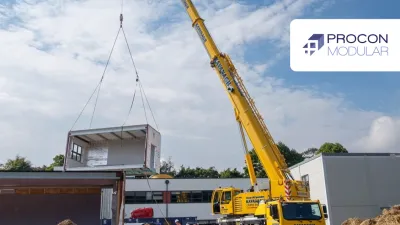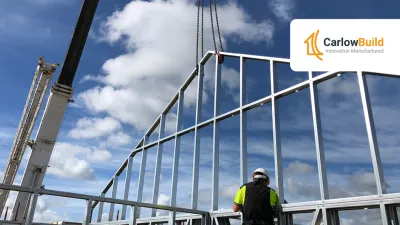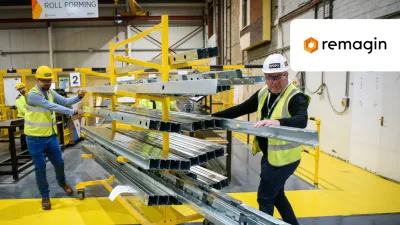Immersion in MMC: Learning the Skills to Excel in Light Gauge Steel Off-Site Manufacturing
The Framespace Solutions’ team includes some of the most knowledgeable light gauge steel (LGS) building specialists in Ireland. Offering precision design and off-site manufacturing services for the residential market, the Co. Longford-based prefabricators are re-inventing the use of steel in the local construction industry.
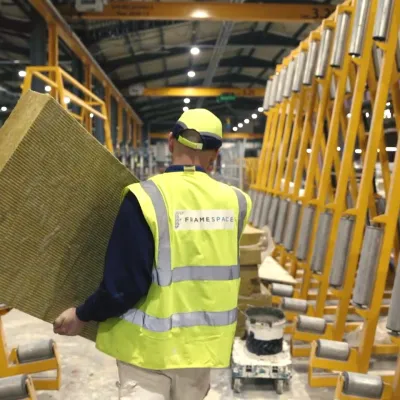
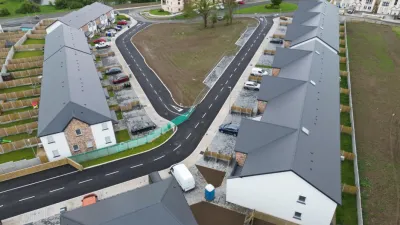
LGS is an intriguing alternative to traditional materials such as timber and concrete. Although light gauge steel has been around for 175 years, the roll and form technology required to produce a high-quality, standardised material wasn’t optimised until the middle of the last century. Because of this, LGS hasn’t been a go-to for many traditional construction companies when developing residential building projects.
Today, LGS manufacturers are using Modern Methods of Construction (MMC) to change that mindset. Framespace Solutions is a prime example of an Irish company modernising this practice, prefabricating LGS frame systems off-site for greater quality control and efficiency. This precision operation is attracting people from a range of different professional skillsets to contribute to Framespace’s MMC projects.
LGS structures are manufactured by pressing and shaping thin sheets of steel, galvanized for corrosion protection, into desired structures. This only needs to be done at room temperature, unlike with traditional steel soldering, giving the material the name ‘cold-formed’ steel. These structures are then precisely cut to required measurements and service holes punched for MEP installations in a production line. These systems can then be transported to site for finishing and assembly.
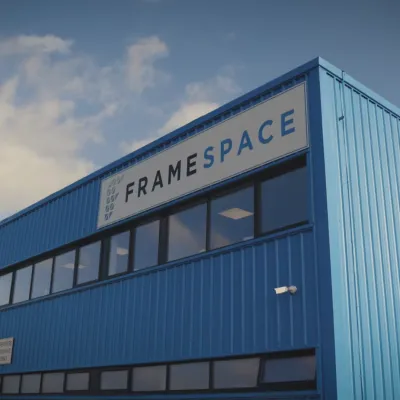
The benefits? Cold-formed steel can be rolled and shaped for various uses, including studs, joists, headers, and even complete frame systems, making it flexible for many building applications. Like timber and concrete, the material is durable. Where it differs is that LGS is both fire-resistant and lightweight, ensuring compliance with building safety standards, and making transport and handling easier and cheaper.
When you combine the benefits of using LGS with moving building off-site, you have a compelling operational model for delivering residential developments at scale. Micheál Keohane, Director & Group Head of Development at Framespace Solutions, elaborated on the advantages of moving construction into controlled manufacturing spaces.

“Off-site building offers faster delivery of projects and means businesses can conduct more regulated quality checks. Imagine, if you were buying a car, that a manufacturing team turned up in your driveway and start assembling there? The efficiencies we gain by manufacturing products in controlled conditions can be replicated in housing delivery with the right production model.”
Director & Group Head of Development at Framespace Solutions
Moving construction off the site and into the factory also requires a change in the skillsets of construction workers. Future roles may prioritise multi-trade expertise and adaptability across different workstations over specialisation in a single niche craft.
“We need multi-skilled operatives able to perform different types of tasks. For example, we need General Operatives able to install brick slips on one project, then cladding panels the next, and then do a bit of carpentry or welding. As our project pipeline evolves, our people need to be trained to evolve with it.”
Director & Group Head of Development at Framespace Solutions
The production workers at Framespace come from a range of backgrounds – many in the world of construction but some from outside it. Micheál notes that “carpenters, fitters, and welders generally adapt well to LGS” but ultimately the in-house training offered at the company means that anyone with a passion to learn can adapt to LGS.
Valentina Lujan, a Lead Design Coordinator, is a prime example of someone who adapted a new skillset to excel at Framespace – indeed, MMC is all she knows in the construction industry. Although she earned a Bachelor of Architecture in Universidad Nacional de Córdoba in her native Argentina, Valentina started her career as an Interior Designer, it was only after moving to Ireland in 2018 that she joined the building sector.

“I came to Europe to travel, then decided to settle down and learn English. I was looking for a job in interior design—what I was familiar with—but saw how much the construction sector in Ireland was thriving. I had already used Revit before, and had years of design expertise and the curiosity to learn new skills, so I was able to adapt to the Revit Technician role with ESS Modular quickly.”
Lead Design Coordinator, Framespace Solutions
Valentina was responsible for creating architectural sketches and communicating specifications to production teams in real time. Not that different from her previous day-to-day, and the off-site nature of ESS Modular was key to her career progression.
“All of my experience in construction has been in prefabrication and MMC. A major part of my role now is discussing the opportunities available when building off-site with clients unfamiliar with this way of working. There is no type of project that couldn’t benefit from moving elements of the build off-site.”
Lead Design Coordinator, Framespace Solutions
In 2020, Valentina completed a Postgraduate Certificate in BIM Technologies and then another in Building Performance at Technological University Dublin. This developed her knowledge of digital design and sustainable building principles, and paved the way for her current leadership role. Valentina now heads a design team creating LGS systems for builds nationwide, as well as coordinating with project stakeholders.
“Designers could spend hours over-drawing every detail of an architectural model and then communicating these specifications. At the same time, people on the production floor need much of those details to fabricate a high-quality product. So, it’s essential for both to have digital design tools that facilitate these interactions in real time and coordinate between the design office and producers. Soft skills are vital to making MMC systems excel in what they do.”
Lead Design Coordinator, Framespace Solutions
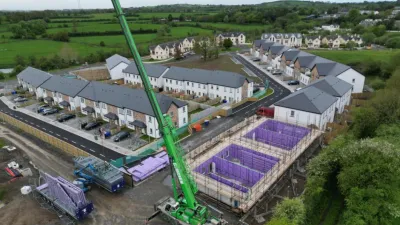
One recent project both Micheál and Valentina worked on was the Riverside Manor & Riverside Green developments. Built for Alchemy Homes, the project included 16 four-bedroom houses, apartments, and duplexes on a 158,000 square foot site in Kilcullen, Co. Kildare – in recent decades one of the fastest growing towns in Ireland.
Framespace deployed LGS closed-panel wall systems, closed panel floor cassettes, and 3D Volumetric roof panels on all units. Each building façade was finished in the manufacturing facility before transport to site with the render and brick slip already installed.
Phases 1 and 2 of the residential developments are now complete and occupied, offering welcome new-build options to the stock of local housing.
Advanced digital design technologies and off-site fabrication processes may seem like the heart of MMC. In reality, it’s about using smarter ways of building to bring new skillsets into an exciting industry with lots of potential for further growth.
